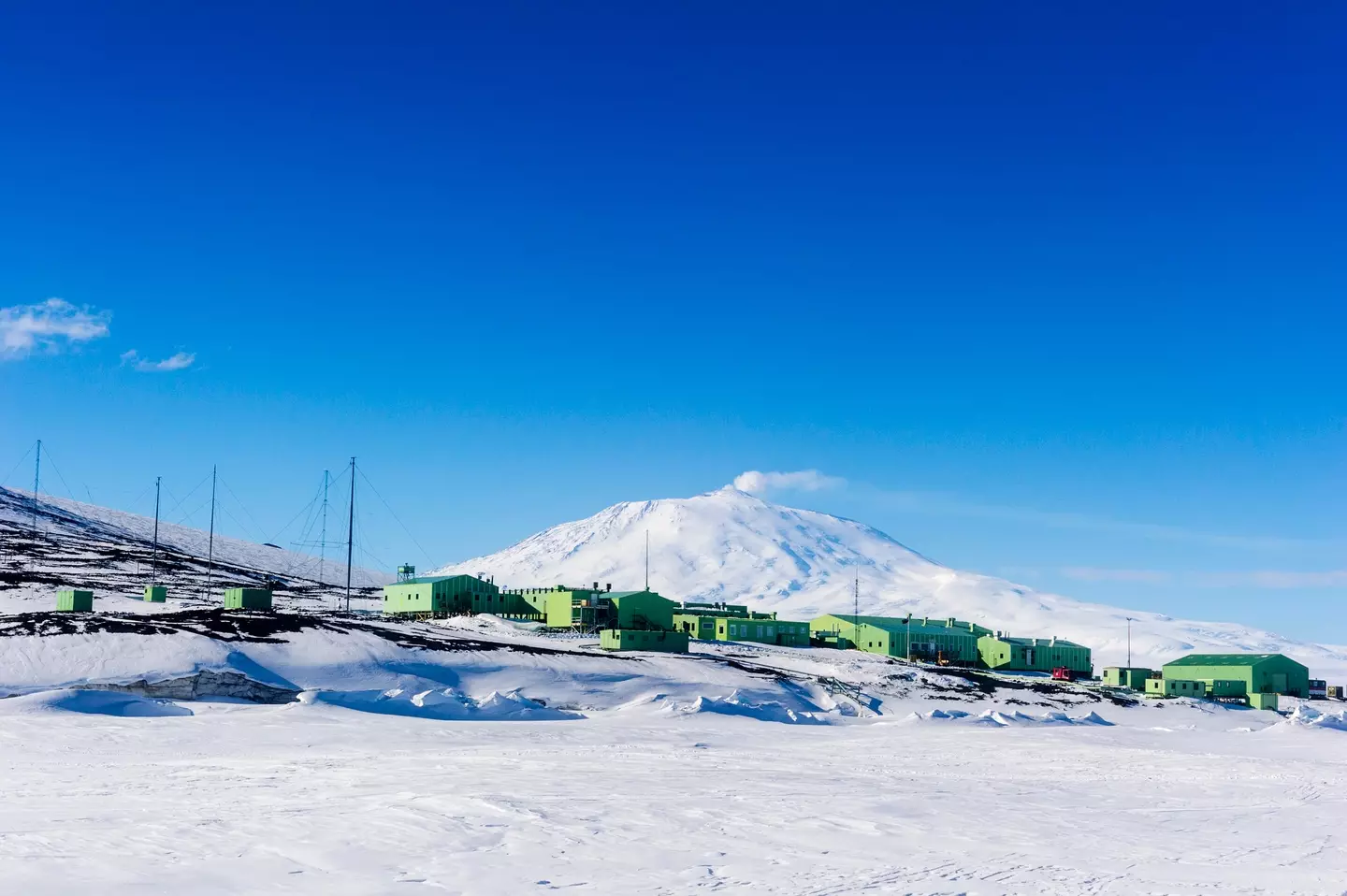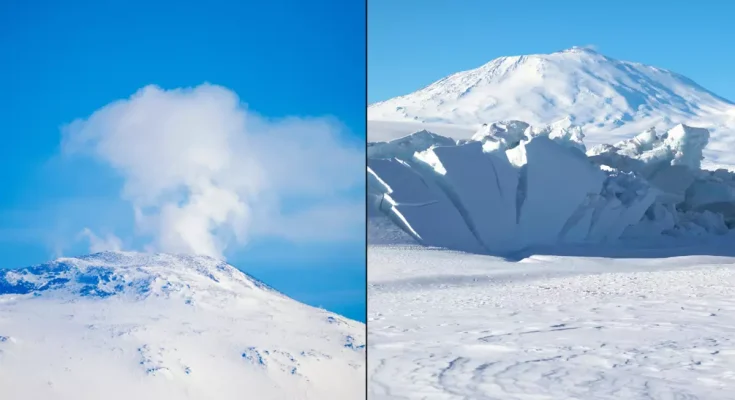Mount Erebus is the world’s southernmost active volcano
There’s a volcano that lets out ‘gold dust’ on a daily basis, which later becomes crystallised due to the conditions it’s in.
It is the second-tallest volcano in Antarctica, and to go with the usual products of gas, steam, and rocks, scientists have discovered that the valuable element also comes out of its crater.
Mount Erebus was first discovered in 1841 by Captain Sir James Clark Ross, who named it after his vessel, though it took more than 130 years to become active again.
This happened in 1972, and makes up one of 138 volcanoes in the world’s least populated continent, though only two of these are regarded as active.

Mount Erebus is unique in this way (Getty Stock Photo)
Mount Erebus is covered in ice and snow, but the inside contains a scorching hot molten lava lake that has been spewing things out for over 50 years.
Conor Bacon, who works at Lamont-Doherty Earth Observatory at Columbia University in New York, told Live Science that this occurrence was quite rare.
“These are actually quite rare, as it requires some very specific conditions to be met to ensure the surface never freezes over,” he explained.
Experts have also discovered during past episodes of volcanic activity that Erebus has spewed ‘volcanic bombs’, which are boulders of partially molten rock.
Standing at 12,448ft (3794m), it regularly releases gas and steam, which is loaded with tiny crystals of metallic gold that are just 20 micrometres across, which is 0.02 of a millimetre.
So pretty tiny, then.
It may be a small amount each time, but through a day, it pumps out about 80g of gold specks, which is estimated to be worth a total of $6,000 (£5,000).
However, they are carried by the gas, which is 1000 °C, to the surface, crystallising at the crusty surface of its lava due to the environment.

It’s safe enough for scientists to live (relatively) nearby (Getty Stock Photo)
It is then suggested that the gold particles travel through the air, as gold dust has been detected 621 miles away from the volcano.
Philip Kyle from the New Mexico Institute of Mining and Technology revealed that gold forming is only thanks to the volcano’s calm nature compared to other active volcanoes, when speaking to NewScientist.
Mount Erebus releases gas slowly, so the gold particles have time to slowly form into crystals, instead of erratic eruptions that you may be used to seeing in videos.
In volcanoes with these kinds of eruptions, it would ‘prove impossible’ according to the expert, as he called the remarkable process ‘unique’.
Featured Image Credit: Getty Stock Photos



